I've got 2 weeks to learn architectural photography
Mar 19, 2022 16:19:45 #
larryepage wrote:
With this additional information, I would have the... (show quote)
Larry, Thanks for your kind words.
I don't know if my reading comprehension is suffering or if the OP has inadvertently used the wrong terminology. Although "architectural photography" has somethg to do with "construction progress" photography. The latter requires a differet set of skill sets. Its a combination of photojournalism, documentary, industrial,l and people (public relations) work. it can be done artistically- I often joke that we have to make art out of messy, muddy and seemed chaotic cont instruction sites, bug ugly heavy equipment, and big but not ugly tradespersons.
In some situations, one can take time to set up shots, compose images, pay attention to light etc. and other times it is fast action that needs to be captured with no time or opportunity for do-overs. There are many safety concerns, especially on highrise construction or wehn shooting from elevating devices, lie Sky-Jacks, cherrypickers, etc. Peron protects clothing and gear is mandatory on most sites- hard hats, steel-tipped work boots, safety dayglo vests, and goggles or visors when necessary. Nowadays, although much of the work is out of doors, there still may be Covid-19 protocols in place.
People skills- The on-site photography will need to work with the construction engineers, the site superintendents and many members of the crew.
As for photography gear, I lie to travel light and nimble. I pref a coup pf camera bods and zooms. I prefer not to change lenses in invrionmetswher the is like o be airborne dust, metallic filings, and various fumes. Fussing with gear can be especially inconvenient and perhaps dangerous when working from a cherry picker in a confined space. On a full-frame body, 24-70mm will address most situations. I occasions need an 18mm or 350mm but rarely.
What you shoot and how you schedule it depends on the scope of the job. If it is a long-term assignment it can progress for demolition and excavation, foundation construction, concrete pouring, framing, ironwork, prefab installation, insulating, roofing, interior partitioning, and much more- these steps are just a general list, there are many interesting and important details.
I have been doing this, intermittently for many years so kinda know the ropes and know what to expect on most of the sites I service. At first, I consulted with construction engineers and created my own storyboard or list of shots based on the sequences of the construction. Sometimes is just a short assignment just to show the investors that the job is ongoing. Some of my onsite assignments are for the companies that supply heavy equipment, cranes, drilling services and equipment. Someof my work is for brochures and prospectus for investment or project proposals. My last one was for photomurals for trade show displays.
Someone wrote "use your eyes"- of course, but that is not the only concept. Planning is important because you need to be able to anticipate various activities and actions and be at the rig place at right time to capture that phase or aspect of the project. Your exposure, focus, and composition management have to be on the ball!
I certainly do not want to discourage the OP and predict allkis of gloom and doom, nor do I want to suggest that all fothe can be "learned" in a matterof weeks. Perhaps if the client is operating another site or can arrange for the OP to reconnoitre the goings-on and get in a bit of practice and time to gear up as to safety attire and procedures.
I don't want to give the impression that he is rocket science or neurosurgery, but if a contract is in place, money changes hands and a photograher reputation reliability, safety, cooperation, performance is on the line, it is important for some top to know what they are doing and be to deliver the cleit's requirements on time.
I have to look after somethg now, but I am going to follow up with other suggestions in a few moments.

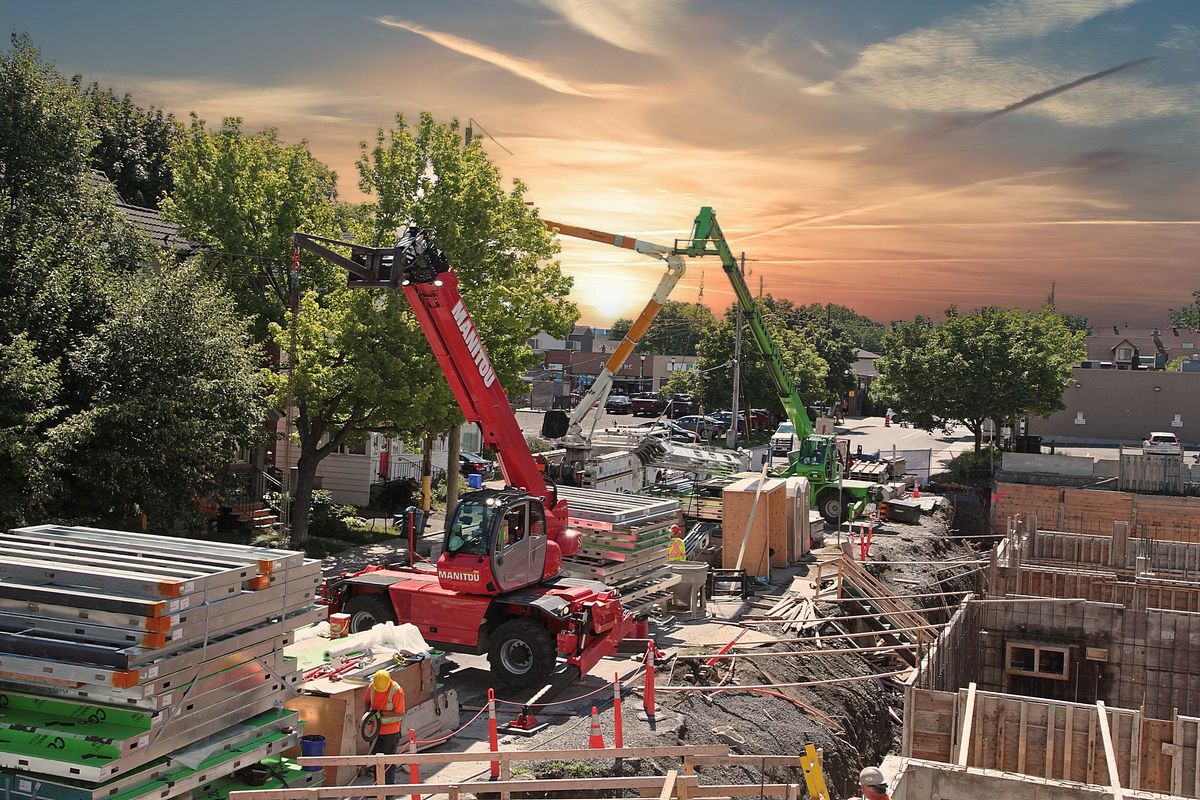

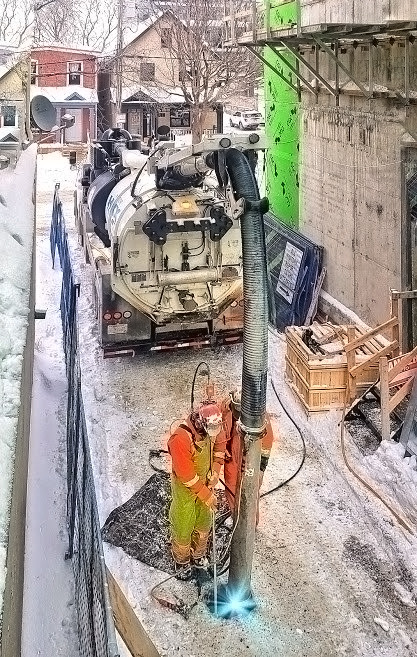

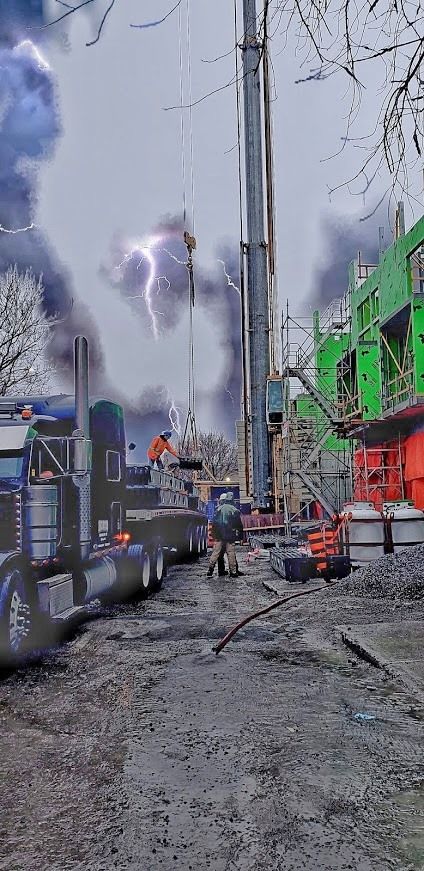
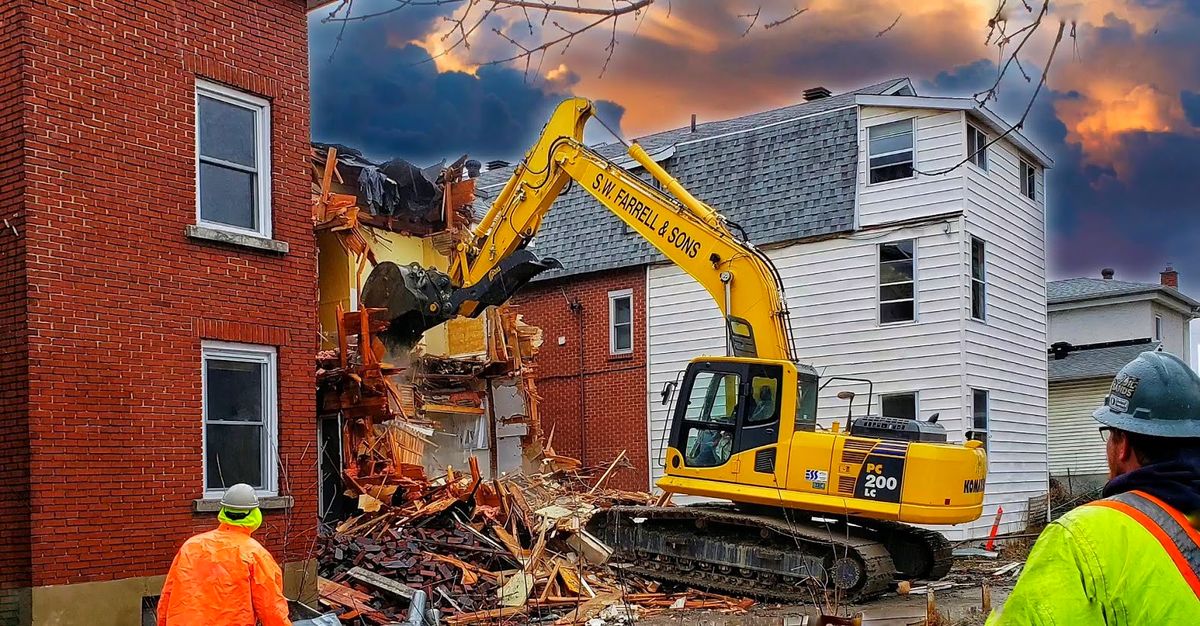

Mar 19, 2022 16:45:23 #
Excellent shooting, and the color and light are awesome 💎🎈💎🎈💎
Mar 19, 2022 17:28:52 #
Picture Taker wrote:
Fisheye can be used if it's a good one can be used but unless it tends to distort. I have a good Canon one bet even that gives you problems as it must be level and the ground in front of you usually has to be cropped out.
Yes thaz very proper technique. Pointed straight up is sometimes very good, too. And it must be sharp cuz FE pix pull the viewer in with their myriad small details.
FE is worth using, judiciously, cuz if the client finds it weird just dump all the FE pix with no comments. But, if the client really likes it ... kah-ching !
Mar 19, 2022 17:54:37 #
Following up I suggest that the OP contact a UHH RonDavis. Ron is an excellent photographer who has been documenting construction progress in Chicago. He has definitely created art from messy construction sites and equipment. His images are very demonstrative of the construction process and he is of colour, lie, and composition is something to aspire to.
Ron can tell of his relationship with personnel on the sites and how he gains access to great shooting positions. He can link you to his impressive collection of images.
I enjoy my work on job sites. I have learned a lot about construction technology and increased my respect for the highly skilled tradespersons and technicians who perform precise and physically difficult work under sometimes dangerous conditions. I would not categorize it as a "have fun" kida photographic circumstance. It's not terribly foreboding but it gives a new meaning to the phrase "head up"! You have to be on your game and be safety conscious at all times." watch your step" is a hackneyed phrase, but onsite it is the law! If you are in a ledge or elevating apparatus, buckle up and use to use all safety belts or harnesses that are available.
Attached: "A Hard Day at the Office". I was shooting a routine drilling operation when the crew struck an unknown. GAS MANE. The guys from the gas company, who got there in a hurry along with 10 fire trucks, later told me that it did not explode or ignite because the pressure was high enough and blew out the spark! Problem was, the cherry-picker I was on, was self-operated (my me) and could not be restarted to ascend until the gas in the air dissipated. Natural gas has no odour but they put a nausea-inducing additive into it to awaken or make folks aware of a leak (UGH) Good thing something told me to wear my heavy coat and have a Thermos with hot coffee. You can't see all the fire trucks because they were standing by but did not derive right up to the leaking main. So, I spent the rest of the snowy late afternoon and evening shooting the crew from the gas company repairing the broken pipes. Yup- folks were nervous- note- the propane tank is only a few meters from the problem. I have no fear of heights but being cremated before I die- not good! And ai a hate the stench of burning flesh. Things can happen- heads up
Ron can tell of his relationship with personnel on the sites and how he gains access to great shooting positions. He can link you to his impressive collection of images.
I enjoy my work on job sites. I have learned a lot about construction technology and increased my respect for the highly skilled tradespersons and technicians who perform precise and physically difficult work under sometimes dangerous conditions. I would not categorize it as a "have fun" kida photographic circumstance. It's not terribly foreboding but it gives a new meaning to the phrase "head up"! You have to be on your game and be safety conscious at all times." watch your step" is a hackneyed phrase, but onsite it is the law! If you are in a ledge or elevating apparatus, buckle up and use to use all safety belts or harnesses that are available.
Attached: "A Hard Day at the Office". I was shooting a routine drilling operation when the crew struck an unknown. GAS MANE. The guys from the gas company, who got there in a hurry along with 10 fire trucks, later told me that it did not explode or ignite because the pressure was high enough and blew out the spark! Problem was, the cherry-picker I was on, was self-operated (my me) and could not be restarted to ascend until the gas in the air dissipated. Natural gas has no odour but they put a nausea-inducing additive into it to awaken or make folks aware of a leak (UGH) Good thing something told me to wear my heavy coat and have a Thermos with hot coffee. You can't see all the fire trucks because they were standing by but did not derive right up to the leaking main. So, I spent the rest of the snowy late afternoon and evening shooting the crew from the gas company repairing the broken pipes. Yup- folks were nervous- note- the propane tank is only a few meters from the problem. I have no fear of heights but being cremated before I die- not good! And ai a hate the stench of burning flesh. Things can happen- heads up

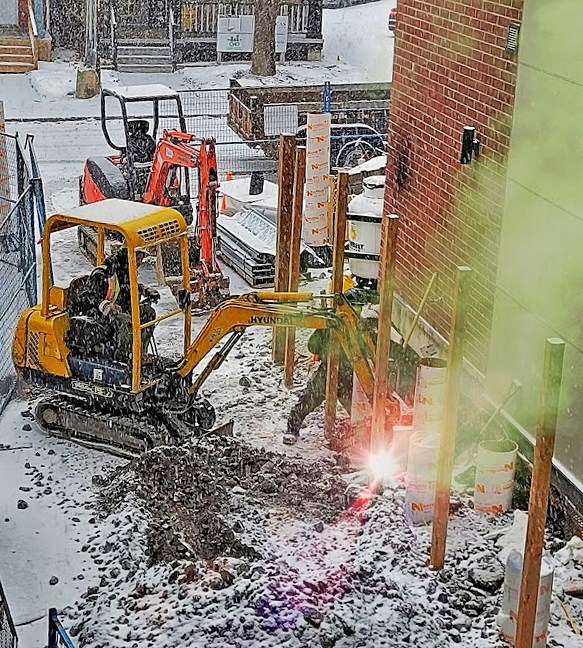
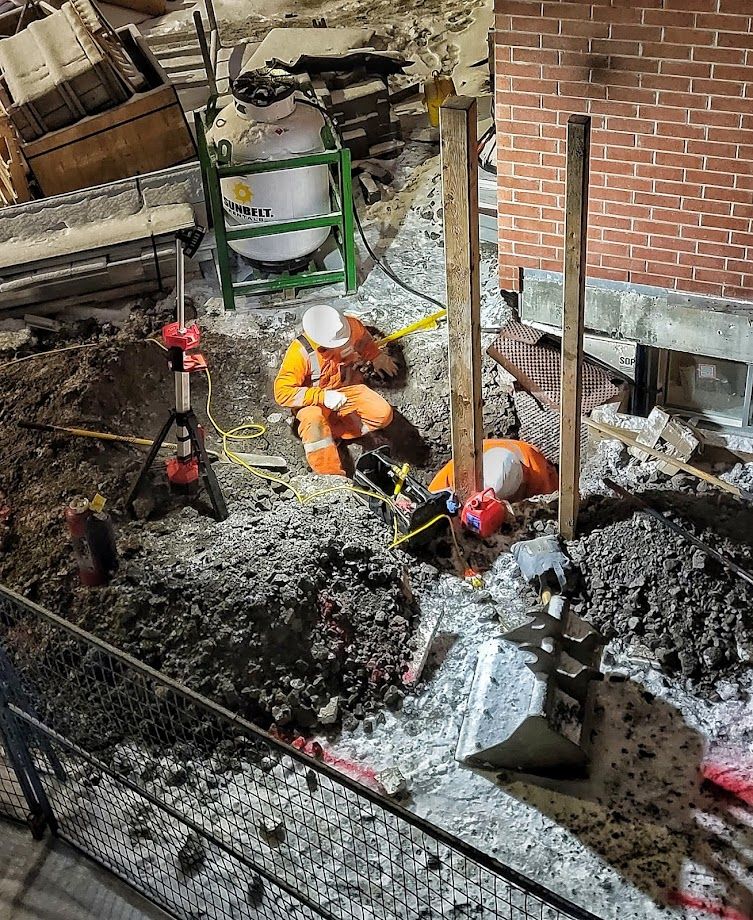
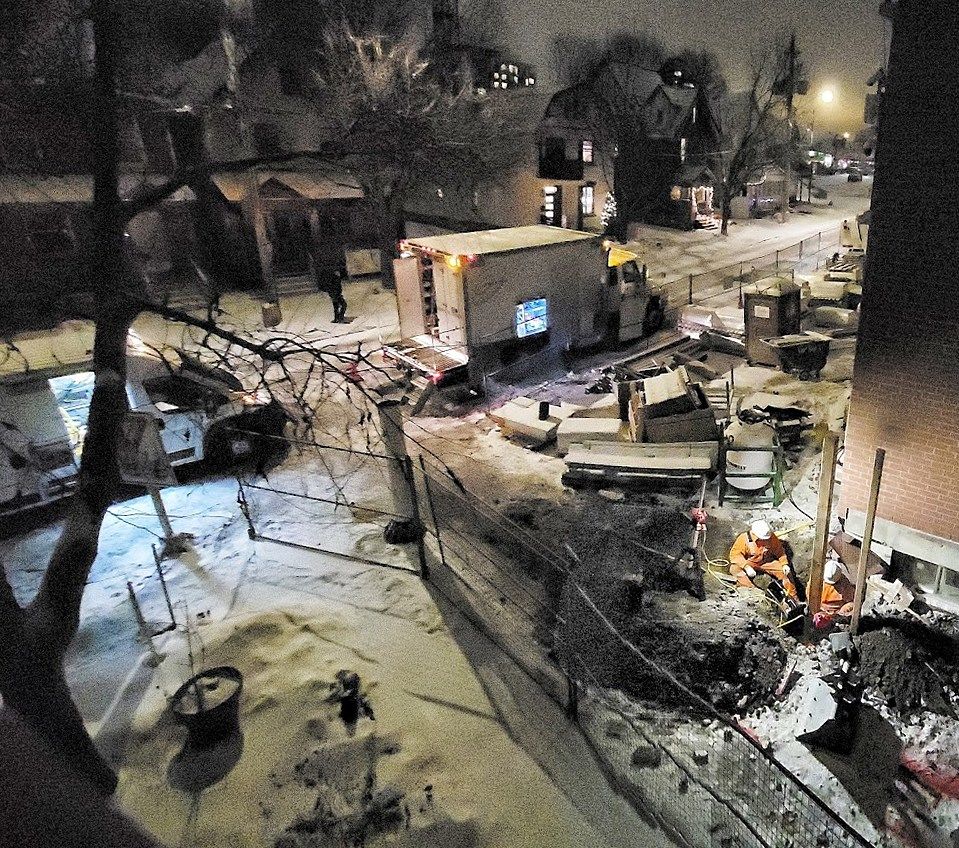
Mar 19, 2022 20:33:01 #
Timmers
Loc: San Antonio Texas.
twosummers wrote:
Help! br br Calling all UHH architectural photogr... (show quote)
In the US when working on interior photography you will need to produce two images. One will be the view seated and the other while standing. This comes as to the proper use of a tri pod. Set the tripod up being careful that it is properly leveled using the spirit level built into the tripod collar. The first set up is either with the column retracted or extended. After making the first of the two, raise or lower the center column up or down. The lower position is the seated view, while the raised position is the standing position. You have the two views, architect like standing views while decorators and sales agents prefer the seated view.
Important point, the standard 'viewing height'* is taken to be approximately 53 inches from floor to optical center of an art work on a wall. This is never 'set in stone' so don't fret about it. So I always begin by having the tripod middle column fully raised and use a tape measure to set floor to center of lens as a height.
*Now, you will run into a vast quality of the in know pinheads who will dispute this number, I have. I tell them that the value is variable, that the notion of 'standard viewing' height was first put there by a photographer named Fredric H. Evans when he hug the annual exebition of the Linked Ring in England. His hanging of the show had such an impact that with in two years time EVERY museum and gallery world wide adopted his methodology for museum presentation. The use of a 'proper' viewing height was what Evans determined was a good viewing height and so established a proper height for viewing. This was the establishment of a notion as to a 'proper' elevation for a standing view. There is no other real 'standard' other than Evans esthetic that art or interiors have a standing position for viewing. By the by, Evans architectural interiors are considered some of the finest renderings the world around. It is important to know your craft but it is even more important to know the history of that craft.
Mar 21, 2022 01:11:22 #
[quote=E.L.. Shapiro]Following up I suggest that the OP contact a UHH RonDavis. Ron is an excellent photographer who has been documenting construction progress in Chicago. He has definitely created art from messy construction sites and equipment. His images are very demonstrative of the construction process and he is of colour, lie, and composition is something to aspire to.
Ron can tell of his relationship with personnel on the sites and how he gains access to great shooting positions. He can link you to his impressive collection of images.
Hi Ed…thanks for the kind reference in this post (kinda put me in the spot light...no problem). Hopefully I can offer the OP – Towsummer, a little more insight to the collective UHH knowledge already presented in this post.
Hi Towsummer……congratulation on landing a challenge photo assignment. You’re very fortunate to have received wonderful advice from all the knowledgeable UHH of shooters. I can only offer you some more insight that steams from my experience combined with a few questions and observations about the brief job description you posted:
“The job is to photograph the various contractors and their work on a major new development including commercial and residential content. The project is currently under construction.”
Having on-sight access to a construction site and crews is a rare privilege not granted to a lot of photographers for Union and Insurance liability restrictions. However, this privilege has conditions that will challenge your skills and capabilities. There's been a lot of good advice in this thread......the following questions are asked to provoke your thoughts about your shooting plan and expected outcome:
1> How large/tall/high will the “major new development” be? You say this development is under construction. What phase of construction is the project in: ground breaking, foundation / caissons or vertical construction? What is the completion or delivery date? What actions are you required to capture for your client? What story are you trying to capture and present?
2> Will you be photographing internal or external construction activities? As you walk through the site, consider rapidly changing lighting conditions and your camera settings. IMHO, you might consider a fast kit lens for a rapidly changing scenes and lighting. Lately, I’ve found 16-55MM, F2.8 to be a favorite, but an 18-135 is also extremely useful.
3> Crew members are busy….and generally, you can’t ask them to pose for you. But, they are the subjects of you photos…will you give them “free” access to your photos? The Publication is your Client….not the Crew members. I’ve always found giving Crew members access to the photos is the greatest team building and trust building jester you can offer. After all, these guys will be the ones yelling “look out” when you’re in a strange, dangerous construction site….you'll need friends.
4> Will you be limited to one visit? Different activities occur on different days…therefore you may want to arrange for multiple visits to capture different activities as they occur…..AND retake mistakes and missed opportunities. This is where the challenge becomes more challenging! (Honestly, I doubt if you will be able to capture all the different and related activities during a one day visit…it doesn’t work that way).
Currently, I’m editing a shoot for my "Art of Construction" post on UHH soon. What follows is an assortment from earlier engagements at different construction sites (featured on my web page). Maybe you'll find these thought provoking and useful. Good luck with your shoot(s).
Ron can tell of his relationship with personnel on the sites and how he gains access to great shooting positions. He can link you to his impressive collection of images.
Hi Ed…thanks for the kind reference in this post (kinda put me in the spot light...no problem). Hopefully I can offer the OP – Towsummer, a little more insight to the collective UHH knowledge already presented in this post.
Hi Towsummer……congratulation on landing a challenge photo assignment. You’re very fortunate to have received wonderful advice from all the knowledgeable UHH of shooters. I can only offer you some more insight that steams from my experience combined with a few questions and observations about the brief job description you posted:
“The job is to photograph the various contractors and their work on a major new development including commercial and residential content. The project is currently under construction.”
Having on-sight access to a construction site and crews is a rare privilege not granted to a lot of photographers for Union and Insurance liability restrictions. However, this privilege has conditions that will challenge your skills and capabilities. There's been a lot of good advice in this thread......the following questions are asked to provoke your thoughts about your shooting plan and expected outcome:
1> How large/tall/high will the “major new development” be? You say this development is under construction. What phase of construction is the project in: ground breaking, foundation / caissons or vertical construction? What is the completion or delivery date? What actions are you required to capture for your client? What story are you trying to capture and present?
2> Will you be photographing internal or external construction activities? As you walk through the site, consider rapidly changing lighting conditions and your camera settings. IMHO, you might consider a fast kit lens for a rapidly changing scenes and lighting. Lately, I’ve found 16-55MM, F2.8 to be a favorite, but an 18-135 is also extremely useful.
3> Crew members are busy….and generally, you can’t ask them to pose for you. But, they are the subjects of you photos…will you give them “free” access to your photos? The Publication is your Client….not the Crew members. I’ve always found giving Crew members access to the photos is the greatest team building and trust building jester you can offer. After all, these guys will be the ones yelling “look out” when you’re in a strange, dangerous construction site….you'll need friends.
4> Will you be limited to one visit? Different activities occur on different days…therefore you may want to arrange for multiple visits to capture different activities as they occur…..AND retake mistakes and missed opportunities. This is where the challenge becomes more challenging! (Honestly, I doubt if you will be able to capture all the different and related activities during a one day visit…it doesn’t work that way).
Currently, I’m editing a shoot for my "Art of Construction" post on UHH soon. What follows is an assortment from earlier engagements at different construction sites (featured on my web page). Maybe you'll find these thought provoking and useful. Good luck with your shoot(s).

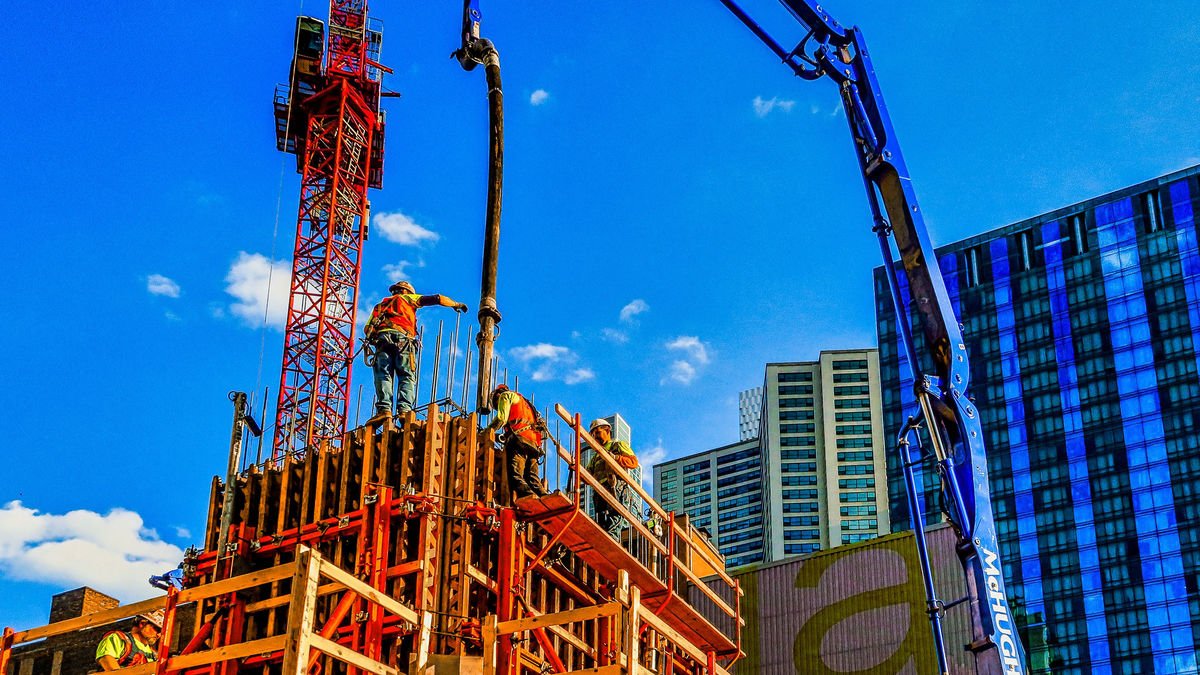
(Download)

(Download)

(Download)
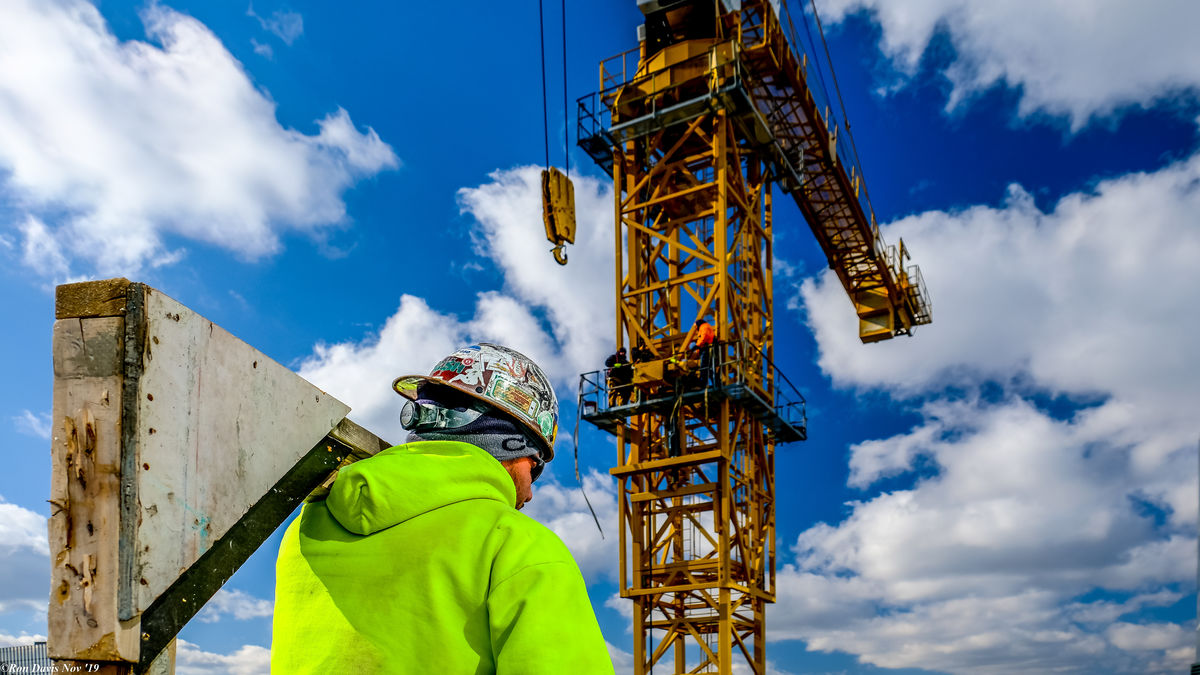
(Download)
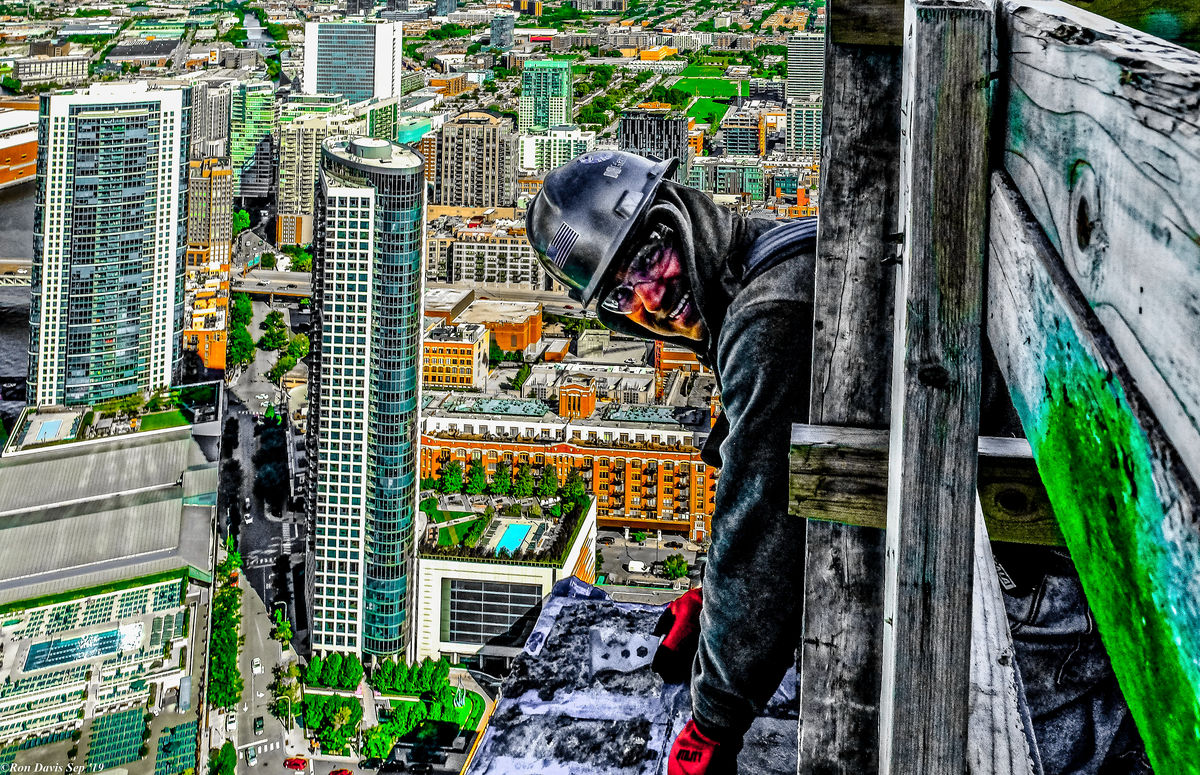
(Download)

(Download)
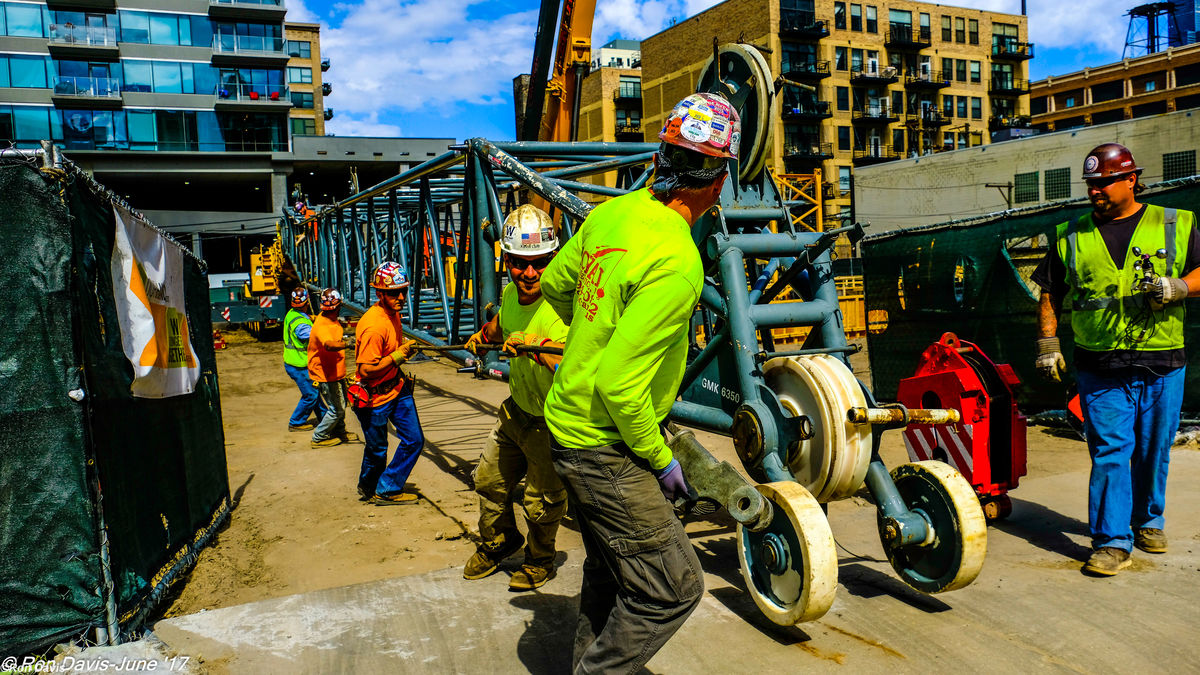
(Download)

(Download)
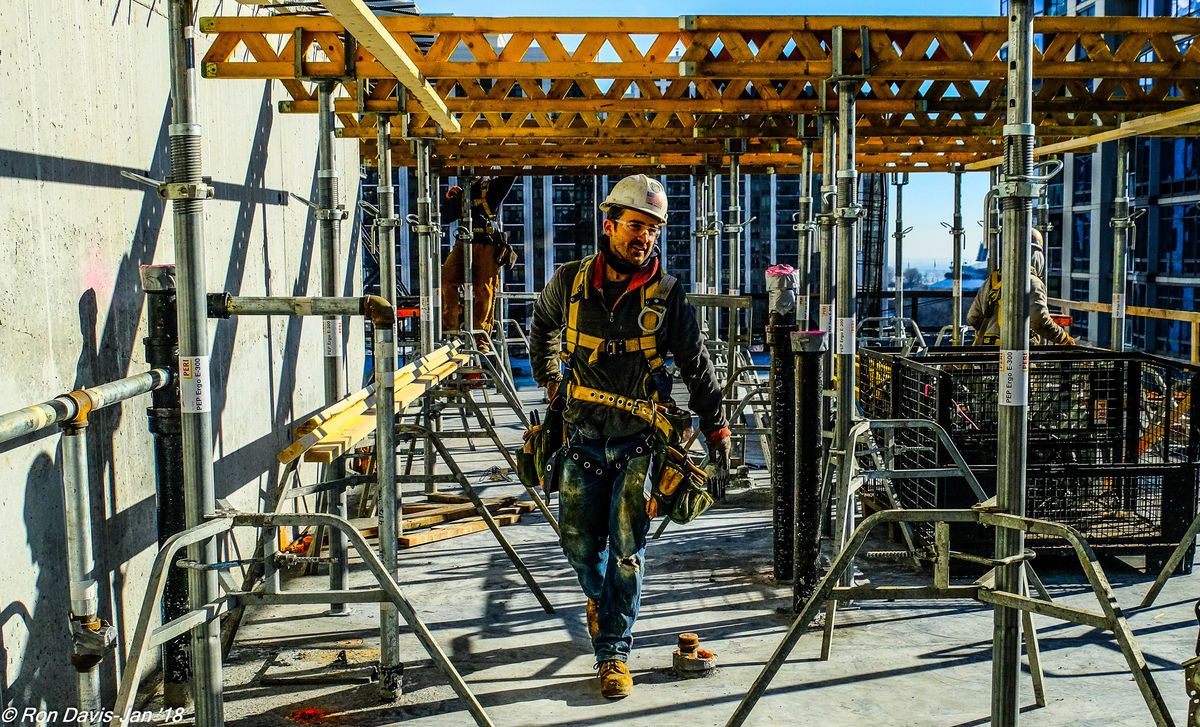
(Download)

(Download)
Mar 23, 2022 12:45:07 #
Good advice by construction pros. As I read this, I recall that the former District Attorney of Los Angeles (and father of the current mayor...I wont comment on political opinions here.) Gil Garcetti was a photographer. He was driving by the Disney Hall and became fascinated by the construction. He eventually started taking photos, wrote a book on it...and I recall the photos being quite good. I recall that he embedded himself with the construction folks, taking their advice, befriending them, etc and it was a great project.
You might want to take look at his book.
https://www.amazon.com/Iron-Erecting-Walt-Disney-Concert/dp/1890449288
You might want to take look at his book.
https://www.amazon.com/Iron-Erecting-Walt-Disney-Concert/dp/1890449288
If you want to reply, then register here. Registration is free and your account is created instantly, so you can post right away.



